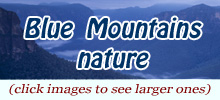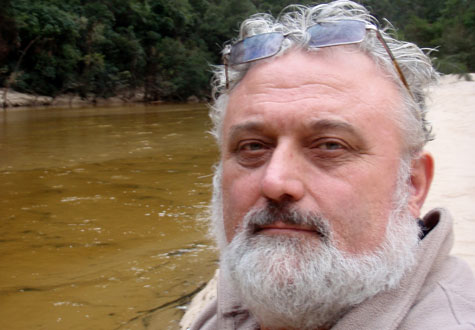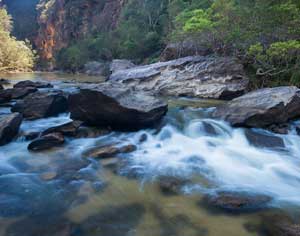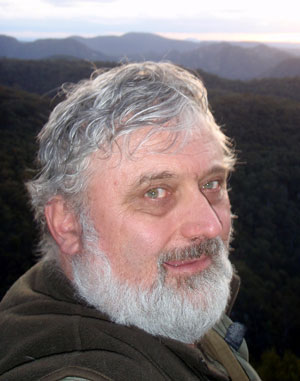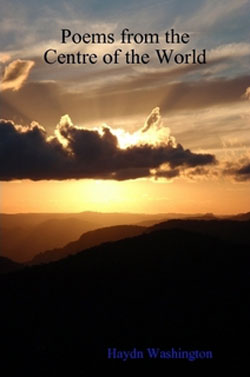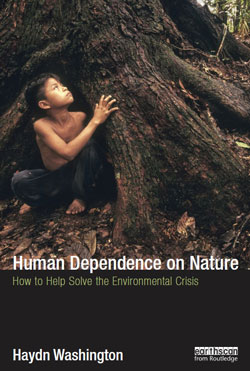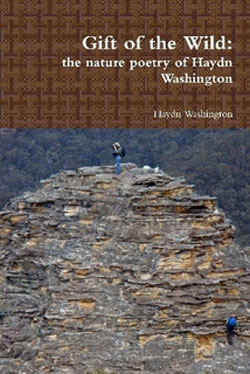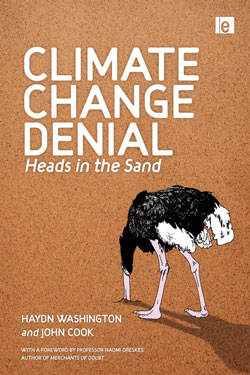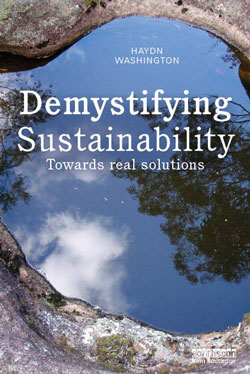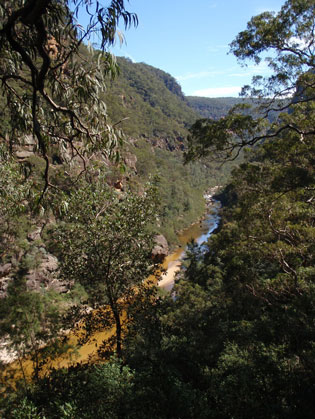He used to walk the bush trails in Scotts Ck and Harold Reid Reserve, and learned to listen to the land.
Year 11 and 12 he did at the Australian International Independent School near Macquarie Uni, and went bushwalking with fellow students.One exploration was a 5 day trip of the Colo River in late 1973, before he started uni.
So four 18-year olds walked down the Capertee River from Glen Davis to supposedly meet up with the walk leader group walking down Wollemi Ck from Putty. Except they didn’t turn up due to rough terrain, so Haydn and friends continued on down the river to Colo Heights, walking through the largest wilderness in NSW in the wondrous Colo river gorge.
It was at dawn, while camped on the Capertee/Wollemi junction that something remarkable happened. As he wrote later in his book ‘A Sense of Wonder’:
Behind us soared steep banks of sand and vertical orange sandstone cliffs. It was just on dawn. There was no thought, nothing but the startling desire to hang on to a connection that we knew could not last - holding on to our harmony for yet another unlikely moment … Someone else in the group moved and turned over, and the Superb Lyrebird ran off up the sand slope to vanish into the bush.
The connection across different animal realms was broken - though not quite gone. He was a distant relative of dinosaurs, the largest passerine bird in the world, and the greatest mimic of them all. I was a descendant of small furry mammals like shrews, that eventually stood up and walked as primates - yet for a moment we had been one.
He realized that the Lyrebird, the world’s greatest mimic, had no human voice to speak for his home.
Shortly after, he walked into the Total Environment Centre and asked: ‘What can I do?’.Milo Dunphy replied: ‘We are starting up a Colo Committee tonight’ and so Haydn became the Secretary of the group that night.
The Colo Committee then went on to run the major campaign from 1974 to 1979 to create Wollemi NP.
At the same time as campaigning flat out, Haydn was studying ecology at Macquarie Uni. He then went on to work on a study of heavy metal pollution of Australian rivers in CSIRO, on which he did a M.Sc.
Haydn and the Colo Committee went on to start the campaign for the Gardens of Stone (indeed the term came from a Spring walk to Pt Cameron in the wildflowers among the pagodas).
Haydn also went on to work in the NSW rainforest campaign (especially Banda Banda and Washpool), on the Franklin campaign, and later the Daintree/ Wet Tropics campaign.
In 1985 he left CSIRO to travel in Latin America for a year, and it was on Boxing Day in Torres Del Paine national park that ‘the Muse’ came to him and he became a poet, which he later described as the ‘single most glorious feeling in my life’.He has published two books of nature poetry - ‘Gift of the Wild’ and ‘Poems from the Centre of the World’ and is a contributor to two collections of the ‘New Voices’ poetry group started by Dexter Dunphy (Milo’s brother).
On his return to Australia, he taught high school science for a year, worked as an environmental consultant, was Director of the Nature Conservation Council of NSW, did botanical consulting, worked as a Director of Sustainability in local government.
He returned to uni (Western Sydney) to complete a PhD ‘The Wilderness Knot’ on the confusion about what wilderness is. The website Wilderness Truths highlights his conclusions.
He later taught environmental science for some years at UNSW, where he was an Adjunct Lecturer.
Haydn has written six books on environmental issues and edited two others. Most notable are:Haydn also wrote extensively about ‘ecocentrism’ and was the lead author of the Statement of Commitment to Ecocentrism.
Haydn was keenly interested in the geodiversity of the Greater Blue Mountains, on which he has published.
Haydn lived on Nullo Mountain on the NW edge of Wollemi NP in a house he built himself.
Haydn was Co-Director of the NSW Chapter of CASSE which promotes a sustainable steady state economy.
Haydn passed away in December 2022.
Wild river flowing
Mother of waters,
Cliffs of light rising.
This is my home ...
Canyons and chasms
Jungle and plateau,
And architect's mountains
Stone wizard's wielding.
The land of the Lyrebird
Harp song calling,
Soft breeze blowing,
Dreamtime falling
To blanket the eyes.
Never forgotten
Waters murmur,
I will return
In due time singing
To the land of my childhood,
River of memories,
Hearth of my heart.
With a special moment,
A day of meaning
Where all things
Come together
And one smiles
In sheer wonder.
With a sudden silence
A caress of wind
And a brief, ethereal
Ripple of light -
It is as if
The Goddess passes
And bestows a smile
Upon the open heart.
In this teeming world,
So full of worries,
That even now
She still walks!
And those who listen
Can still step into
The eternal now.
Just as Thoreau
Marvelled
At the friendship
Of a pine needle,
I too looked out
At trees, grass and sun -
So suddenly enfolding:
So very much kin.
That link of communion as
Glossy black cockatoos
Sweep by, land
Tails fanned,
Living stained-glass windows
Worked in red and black.
We meet in joy
At some level
Far beyond words
Touching, connecting
I; you; kin.
Could I only
Sing to the world
On your behalf,
Sing with you,
A song of love,
A song of belonging,
And plead the case
Before the jury
Of massed humanity -
Who mostly seem blind
To your beauty
And your threatened state.
I would sing of
Wonder, magic, kinship -
A rhapsody of preciousness
To bring them
In excited, exalted joy
To tears of amazement,
Could they but hear our song.
‘Just a noisy bird!’
Say some who,
Autistic in spirit,
Hear only noise -
Miss
This scintillating, miraculous
Symphony of Life.
